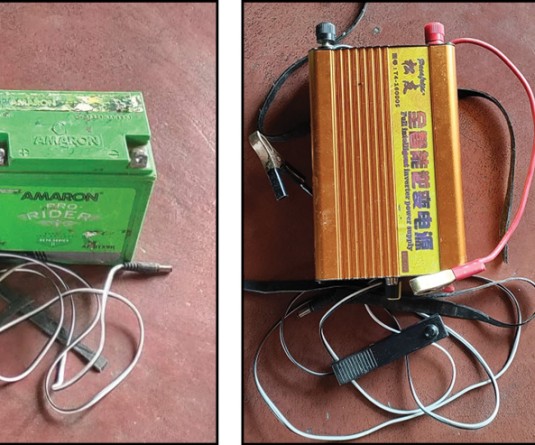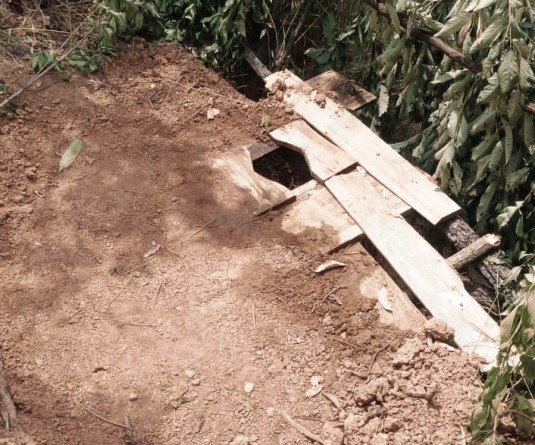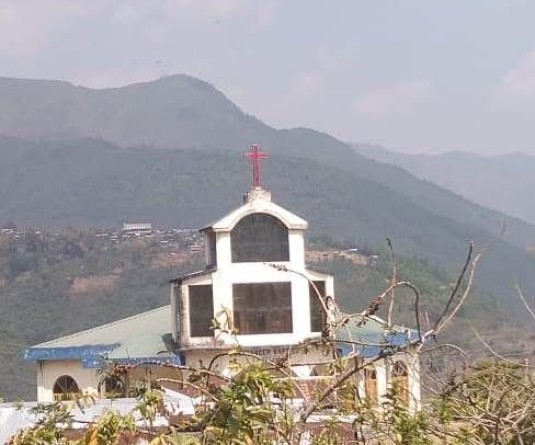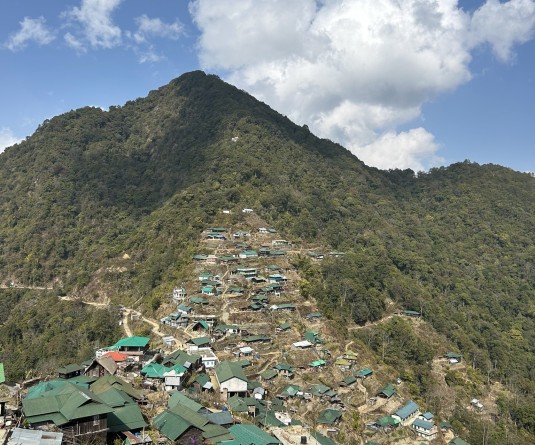1

Easterine Kire
A friend of mine has given me permission to use the poem she wrote about the National Highway connecting Dimapur and Kohima.
ROAD
Relentlessly, the JCBs
Attack the mountains at their knees
Gravity and common sense
Dictate that very soon, immense
Chunks of hill will slither down
And block the road before the town.
Bump and grind, never mind
Shocker shocked, steering locked
Tired tyres skid and slide
Wheels spin, you can’t win.
Truck stuck, land slipped
Car has puncture, bus has tipped.
Ignore the dust, proceed we must
Plunge in pothole, knock on rock
Indeed it’s tough, a road so rough.
Rasta bohod karab, we say
And silently we all will pray
That we’ll get safely home today.
(C.Child)
More than one person has expressed being emotionally affected by the sight of the mountainsides torn down, the ploughed over pineapple fields and the wayside houses that have all disappeared to make way for the four-lane highway. As the familiar landscapes of childhood disappear, it makes sense that people are grieving the loss, and expressing that grief in different platforms.
But this is a necessary evil to endure if we want to get a good, strong road. And landslides and falling rocks and trees, even houses, are part and parcel of it all. Might be much more helpful if we helped its completion by changing our attitude towards the construction work. Stop cursing and criticising, start blessing the road and the workers and the machinery to do a good job. In the end, it is us who are going to benefit from this great enterprise.
In the meantime, one can only hope that people will find things to do other than continually complain about the state of the highway. It is temporary. At least we can comfort ourselves with that reminder.
Something that warrants our attention almost equally is the pull of the invisible around us. Amazing stories are emerging even as the locals reel from the effects of global climate change, excessive rain and the ever present danger of land slipping away from beneath our feet.
Here is the story of a woman who saved her house from a landslide. In a landslide prone area, the woman lived in a house that was now tottering on the edge of a slope, very close to a threatening landslide. Shewould come out every evening, dressed in white from top to toe (the outfit favoured by a certain denomination as a sign of sanctification) and she would rebuke the spirits of landslides. Despite scoffing neighbours and unbelieving onlookers, she continued to pray for the protection of her plot of land. The remarkable thing about the incident was not so much the praying, but the rebuking of the theme ruopfü as the spirits that control landslides are called. The nightly rebukes worked, and when it came, the landslide swept past her land without infringing on her plot – it was as though the theme ruopfühad been heedful of her admonitions. I’m sure this story has many parallels in other regions.
You probably know the next story. A man was returning to his morung very late at night in an inebriated state. All on a sudden he noticed two very tall spirits wrestling in front of his morung and blocking him from reaching his destination. He waited for them to finish but the spirit-wrestling went on and showed no sign of ceasing any time soon. The man sobered up at the realisation that this was an omen that something ill was coming, and he rushed into the morung to pull out his brother. The moment they got out, the morung was swallowed by a landslip and all inside perished. Afterwards, it also turned out that the boy who was pulled out was not his brother. The two were the only members to escape the sad fate of the others.
I believe the invisible world has incredible lessons to teach us. I believe it has always existed, whether in a pre-Christian world or in an era where its representations have taken on Christian connotations. Some feel its pull keenly and allow it to fascinate them. Others can be dismissive of it. The truth remains that there is a reality that is more real than the one we exist in. Could it be that we have a job to do in balancing our view of the destructible visible world with our perspective of the indestructible invisible world? It warrants thinking about.





